Growing Blog
How To Grow Mushrooms – The Seven Basic Steps
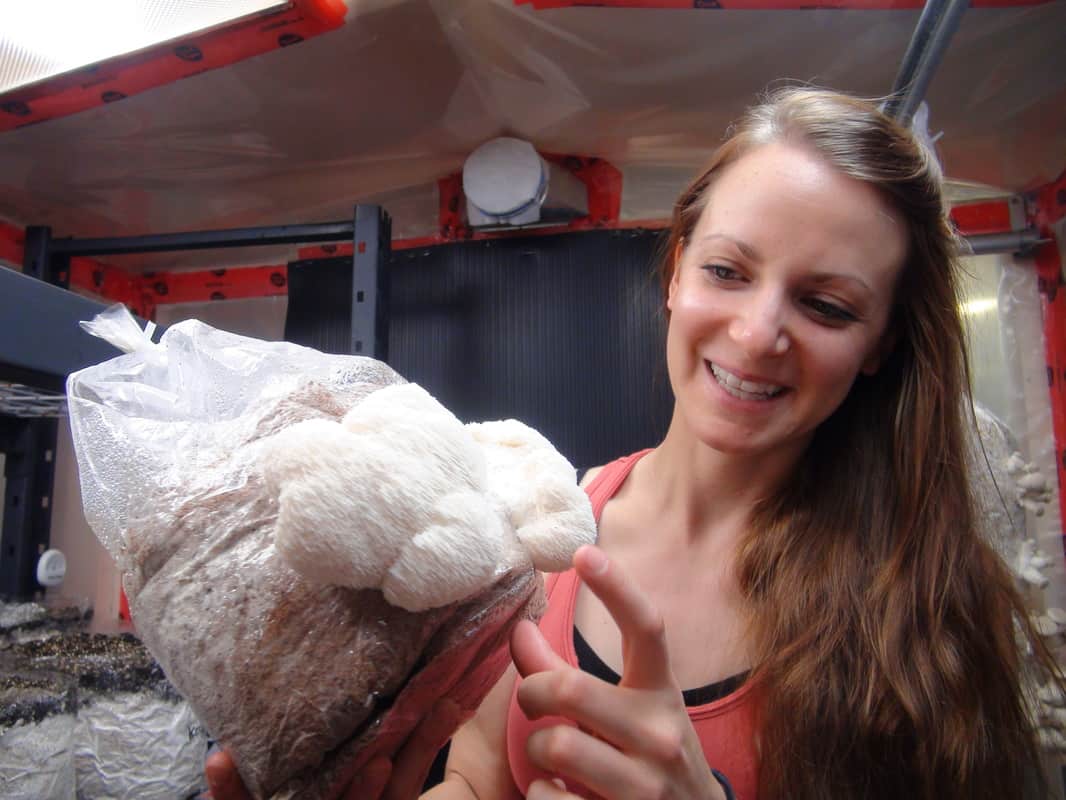
Contents
- STEP 1: Growing out a chosen mushroom culture on an agar filled petri dish
- STEP 2: Transferring the mushroom culture (known as mycelium) onto sterilized grain
- STEP 3: Expanding the grain jar exponentially to create grain spawn
- STEP 4: Spawning the grain into a suitable substrate and fruiting container
- STEP 5: Allowing the mycelium to overtake the substrate
- STEP 6: Inducing pinning of the mycelium by altering the environmental conditions
- STEP 7: Allowing the mushrooms to fruit. Harvest your mushrooms in subsequent flushes
The process of growing mushrooms is a mystery to most people. Although there are a few “how to grow mushrooms” tutorials around, many of them skip out on a lot of steps and make it seem way easier than it actually is. (Add “seeds” to straw and poof! Mushrooms!)
This leaves a lot of people in the dark. Admittedly, mushroom cultivation is quite different from growing garden plants; but the process can be simplified all the same.
There’s no way a complete guide to growing mushrooms could be described in one single post, but I hope to provide a basic outline for people who want to learn more.
So – although there is an endless array of specific cultivation techniques in use around the world, growing most mushrooms generally consists of the same 7 steps.
STEP 1: Growing out a chosen mushroom culture on an agar filled petri dish
This involves placing mushroom spores or a viable tissue sample of mushroom on a nutrient rich media. This needs to be done in an extremely clean environment so that bacteria and molds don’t land on your petri dish and out-compete the mushroom culture.
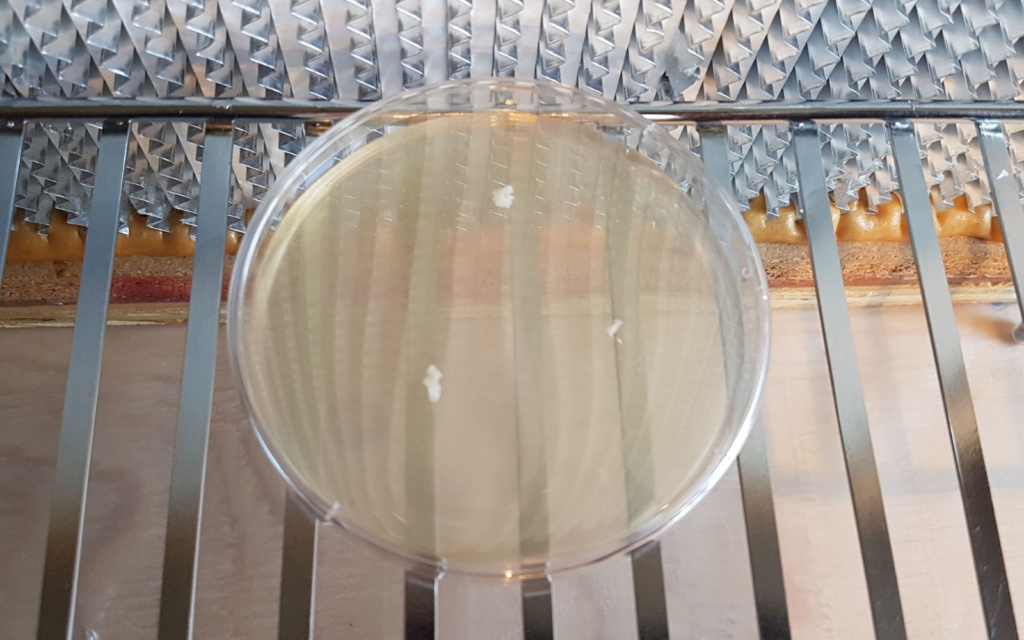
STEP 2: Transferring the mushroom culture (known as mycelium) onto sterilized grain
Again, in an extremely clean environment, cut a sample of mycelium and transfer it into a jar of sterilized grain. The mushroom mycelium will start to grow out, running across and devouring the grain, eventually taking over the whole jar.
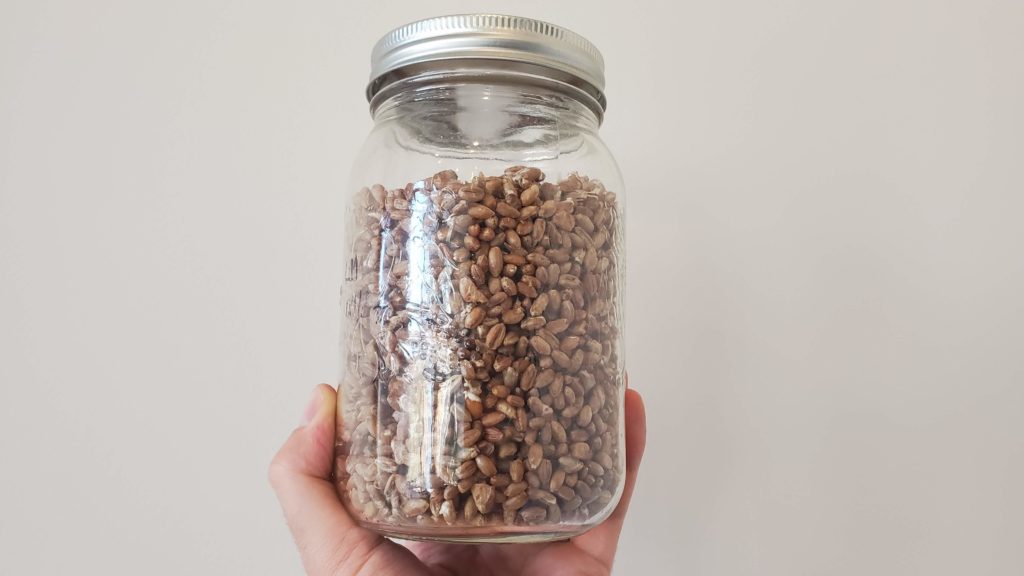
STEP 3: Expanding the grain jar exponentially to create grain spawn
Bits of grain, now called spawn, can be used to inoculate numerous other sterilized grain jars, exponentially increasing the volume of available spawn. One jar can typically be used to spawn ten more jars of similar size.
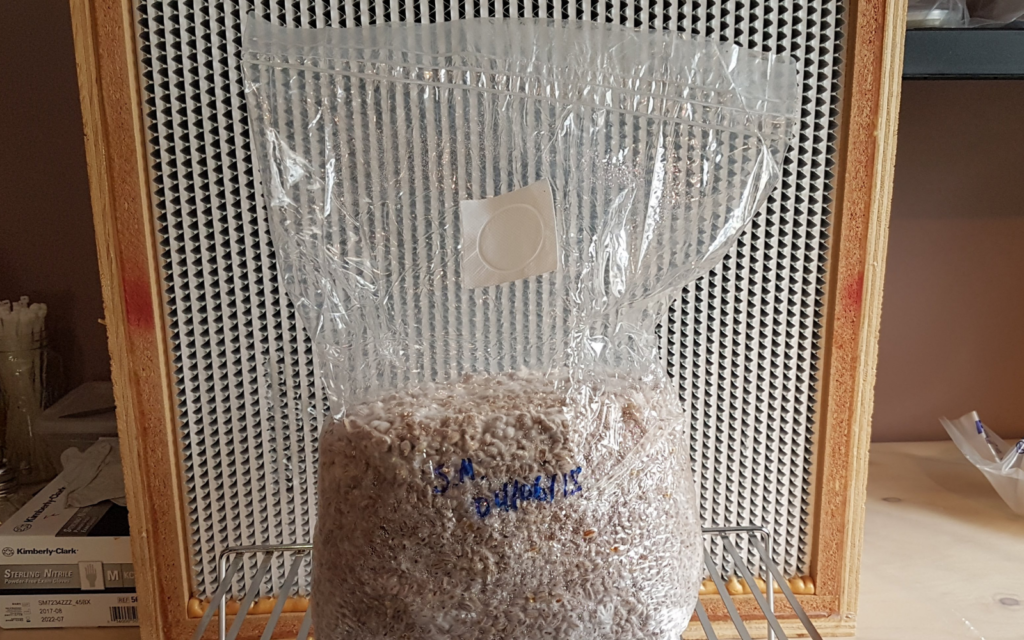
STEP 4: Spawning the grain into a suitable substrate and fruiting container
Once you have a satisfactory amount of grain spawn, it can be used to inoculate a substrate on which the mushrooms will eventually grow. The type of substrate used is dependent on the species of mushroom you are growing.
Typical substrates include straw, wood chips, or compost. Depending on the type of substrate used, it will also have to be pasteurized or sterilized prior to inoculation.
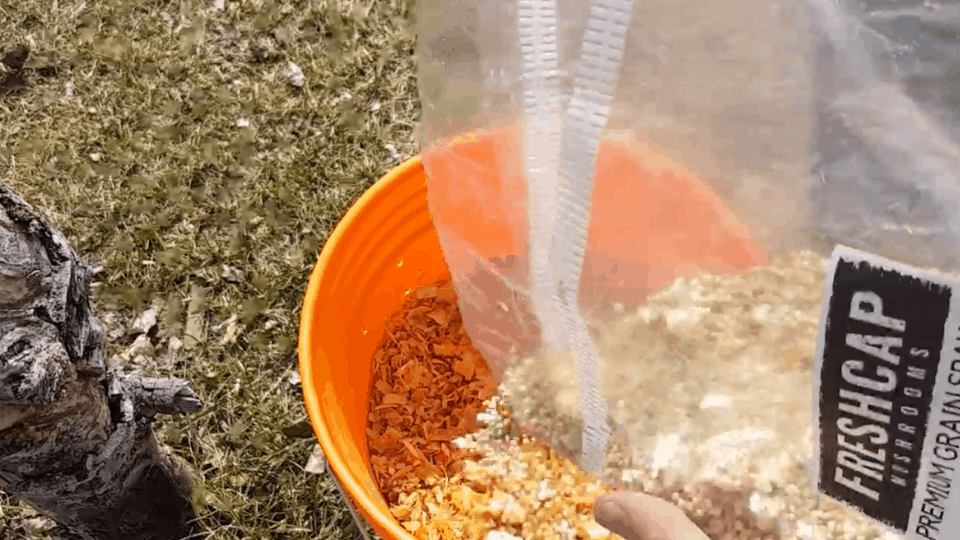
STEP 5: Allowing the mycelium to overtake the substrate
Once the substrate is inoculated, the mushroom mycelium will continue running, consuming nutrients and engulfing the substrate. Once the entire substrate is engulfed in mycelium, you can attempt to induce pinning.

STEP 6: Inducing pinning of the mycelium by altering the environmental conditions
When the environmental conditions are suddenly changed, usually by dropping the temperature and increasing the humidity, the mycelium will start to form little knots which eventually turn into pins. Check out this article to learn about the mushroom fruiting environment.

STEP 7: Allowing the mushrooms to fruit. Harvest your mushrooms in subsequent flushes
Finally, many of these pins -if given the right conditions- will continue to grow, drawing up water and nutrients from the substrate and rapidly turning into full sized mushrooms. If a proper environment is maintained, a healthy substrate can produce numerous “flushes” of mushrooms, allowing the cultivator to harvest the mushrooms 2 or 3 times.
One incredible aspect of mushroom cultivation is the ability of the mushroom mycelium to grow out exponentially, achieving mass thousands of times its original size. For example, a fingernail size slice of culture from a petri dish will grow out to fill a quart size grain jar. That grain jar, in turn, can be used to spawn ten more jars. Those jars can be used to spawn another 100 grain jars, which in turn can be used to spawn 1000 jars!
Eventually, the mycelium will lose vigor and become exhausted, but it is nonetheless incredible that a tiny piece of mycelium can go on to produce thousands of pounds of mushrooms.
This is in no way a comprehensive guide to learn how to grow mushrooms – but simply a basic outline of the process. I plan to write more about these steps and many other mushroom topics, with great articles appearing here on our blog.
In the meantime, interested readers should consult the book “Growing Gourmet and Medicinal Mushrooms” by Paul Stamets. This book provides an incredible overview of mushroom cultivation, and is a must read for anyone interested in growing mushrooms.
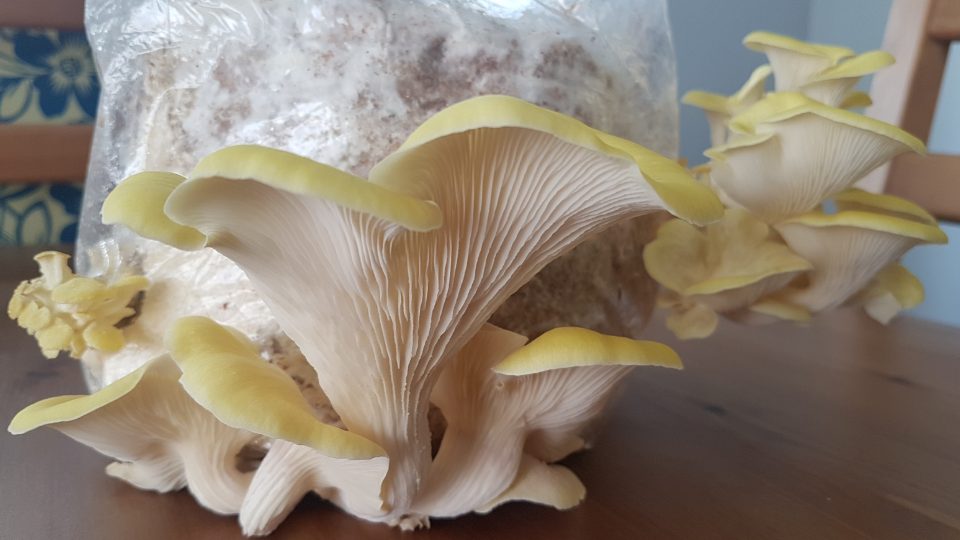
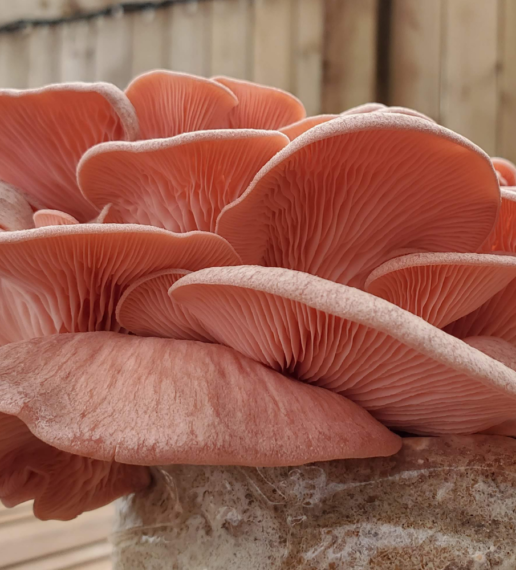
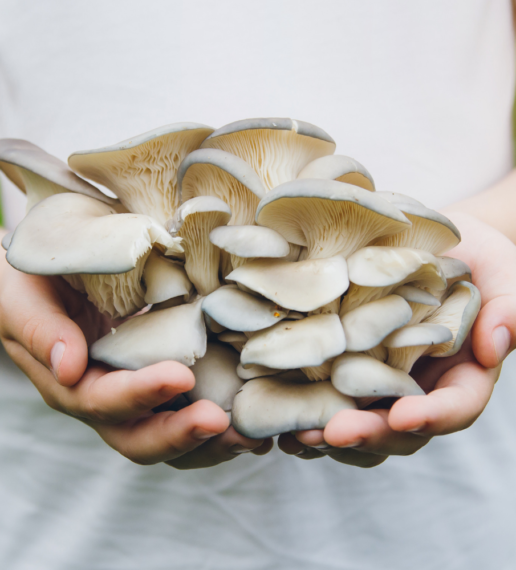
Hi Tony,
What would you recommend in terms of getting mycelium spawn, cloning a piece of a mushroom into a Petri dish or getting spore prints from a mushroom and going from there?
Hi Lakeen!
Thanks for reaching out! Starting from spores or a spore print can be a little bit difficult, depending on what type of mushrooms you want to grow – but certainly possible. You are likely better off starting with a culture, and growing that out from agar. You can certainly clone a mushroom on agar as well, but of course you need the fruiting body first. Starting from grain spawn is definitely the easiest.
Either way I say yes! I recommend!
Let me know if you have any other specific questions.
Hi Tony, thanks for the real quick reply, appreciate it.
I’m a bit confused as to what you meant when you said to start with a culture and grow that out? Did you mean buy commercial grain spawn?
I’m under the understanding and do feel free to correct me here, that in order to get your grain spawn and inoculate the substrate and so forth, you would need mycelium spawn and the only two ways to grown out and get that spawn is to get a mushroom fruiting body and clone from pieces of its structure or get a spore print and grow out the mycelium from that on agar plates and then inoculate grain with that culture.
I was also looking into using bottles and supplemented sawdust substrate inoculated with liquid spore (something I came across on GGMM. Any thoughts (good or bad) on this method?
Hey Lakeen,
Right on, you have the right idea. Of course, mushroom cultures initially start as either a clone, or spores. If starting from spores, it is a genetic crap-shoot, and you don’t know what you are going to get. If starting by cloning, you will get something genetically identical to the mushroom that is cloned. C
Cultivators, over the years, have picked the best strains and saved them as cultures, which is essentially a piece of mycelium that is preserved on agar or in a “culture slant”. You can buy these cultures commercially, and “grow them out” on agar and grain ect, which saves you from needing to clone or start from spores. You can also just buy pre-made commercial grain spawn as well, it is usually the easiest way to start.
Hope that helps!
Hi Tony, I am new to this. I wanted to ask you if you have a list about what mushrooms can be best grown on what substrate. I havent found useful info on that topic. Thanks a lot.
Hey Anton, Thanks for reaching out! Most gourmet and medicinal mushrooms will grow well on hardwood- think Reishi, Lions Mane, and any type of Oyster. Pinks, and Blues will also grow great on straw. For some more info check out this article: https://learn.freshcap.com/learn/understanding-mushrooms-substrates/
A live, liquid culture can be used to grow out mycelium and used to inoculate grains like popcorn or rye. I recently started a LC with MS spores, about 3mls per jar. Once the mycellium is fully developed it can colonize a medium much faster than starting from spores. It is hard to see contaminants in LC’S though, making the agar technique the winner. You can identify contams on plates and also slice out rhizomorphic, healthy mycellium samples for use. I have just recently started an LC and have been studying agar plates, after doing the PF Tek method with not so much success I have sought out another way 2 grow spores to spawn to mushrooms, efficiently. It’s not like planting a tree, much more challenging I’d say.
Is there a good mushroom for blood sugar regulation
I don’t know anything about growing mushroom it seems like very interesting.